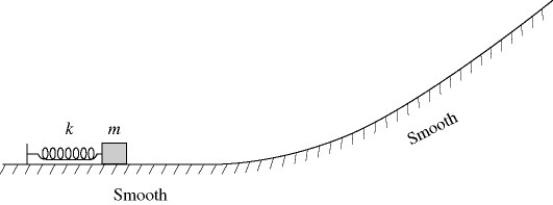Multiple Choice
A box of mass m is pressed against (but is not attached to) an ideal spring of force constant k and negligible mass, compressing the spring a distance x. After it is released, the box slides up a frictionless incline as shown in the figure and eventually stops. If we repeat this experiment but instead compress the spring a distance of 2x 
A) the box will go up the incline twice as high as before.
B) just as it moves free of the spring, the box will be traveling twice as fast as before.
C) just as it moves free of the spring, the box will be traveling four times as fast as before.
D) just as it moves free of the spring, the box will have twice as much kinetic energy as before.
E) just before it is released, the box has twice as much elastic potential energy as before.
Correct Answer:

Verified
Correct Answer:
Verified
Q5: A spring-loaded dart gun is used to
Q21: A very small 100-g object is attached
Q24: An object of mass 4.0 kg starts
Q27: A 2.0 kg mass is moving along
Q29: In the figure, a block of mass
Q30: A 2.5-kg box, sliding on a rough
Q32: In the figure, a 4.0-kg ball is
Q45: Block 1 and block 2 have the
Q51: Is it possible for a system to
Q54: An athlete stretches a spring an extra